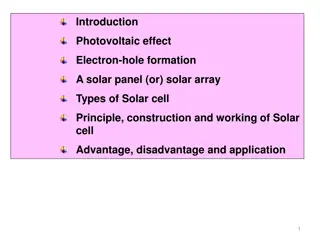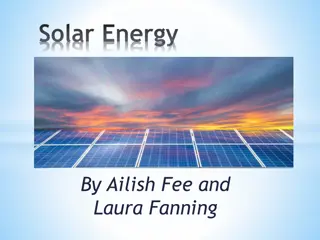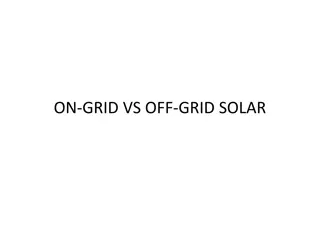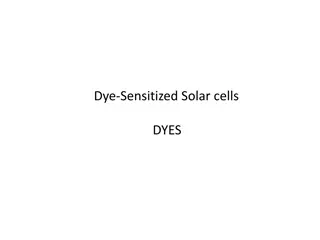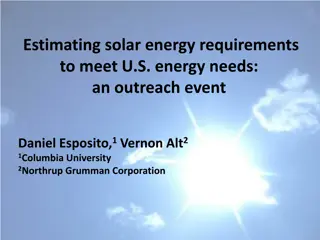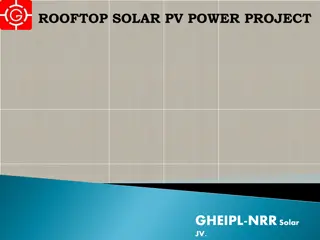Understanding Solar Power: Advantages, Disadvantages, and Working Principles
Solar power is a renewable energy source that has gained popularity due to its cleanliness, affordability, and sustainability. Discover the history of solar energy, how it works, its advantages, like being inexhaustible and cheap, as well as disadvantages such as low output and weak efficiency. Learn about the formula for estimating solar energy output and how solar panels collect sunlight to generate electricity. Explore the affordability of solar power and its potential to address global energy challenges.
Download Presentation

Please find below an Image/Link to download the presentation.
The content on the website is provided AS IS for your information and personal use only. It may not be sold, licensed, or shared on other websites without obtaining consent from the author. Download presentation by click this link. If you encounter any issues during the download, it is possible that the publisher has removed the file from their server.
E N D
Presentation Transcript
Solar Power Reshad, Gabbie, Jacob
History Edmond Becquerel discovered the photovoltaic effect in 1839 Solar Cell was created by Russell Ohl in 1941 The usage of solar power has increased about 76% every year for the past 7 years
How it Works Solar panels work by collecting photons of light energy from the Sun. For optimum efficiency solar panels should be dark and coated glass to decrease the light reflection and to increase absorption Photovoltaic cells, which make up solar panels, convert sunlight energy into a direct current When sunlight hits the photovoltaic cells they release a set of electrons to create a direct current
Advantages Clean Inexhaustible Cheap Incentives
Disadvantages Low output Weak Efficiency Inconsistent
Affordability Over a billion people don t have electricity While the upfront costs may be a lot, solar power is becoming cheaper and cheaper to maintain. The cost of solar energy has decreased 45% and is continuing to decrease as changes in technology make it more affordable
Formula for Solar Energy The formula to estimate the annual amount of electricity generated in output of a photovoltaic system is : E = A * r * H * PR E = Energy in kilowatt hours A = Total solar panel array area in meters squared r = Solar panel efficiency (%) H = Annual average solar radiation on the tilted panels PR = Performance ratio of the panels
Sources http://www.electronicshub.org/solar-energy-advantages-and-disadvantages/ http://www.ucsusa.org/clean-energy/renewable-energy/rooftop-solar-panels-benefits-costs-policies#.WNkzeTvyvIU http://www.seia.org/policy/finance-tax/solar-investment-tax-credit http://www.energymatters.com.au/panels-modules/ https://science.nasa.gov/science-news/science-at-nasa/2002/solarcells http://www.nwwindandsolar.com/solar-power-in-seattle-and-the-northwest/how-do-solar-systems-produce-energy/ https://www.theguardian.com/environment/2012/jan/05/solar-power-billion-without-electricity https://ibphysclimate.wikispaces.com/Energy+degradation









